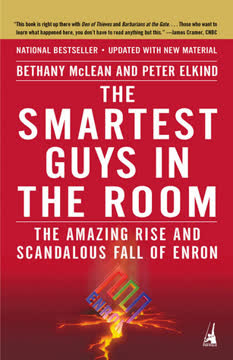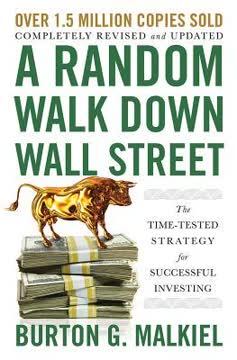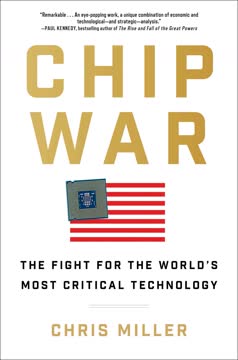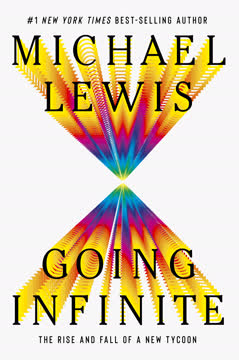मुख्य निष्कर्ष
1. उप-प्राइम बंधक संकट: लालच और अज्ञानता का एक आदर्श तूफान
"समस्या केवल व्यक्तिगत शेयरों तक सीमित नहीं थी। इंटरनेट बबल फट चुका था, और फिर भी सैन जोस में, जो बबल का केंद्र था, घरों की कीमतें अभी भी बढ़ रही थीं।"
एक उभरता हुआ संकट। उप-प्राइम बंधक संकट कई कारकों के संयोजन से उभरा, जिसने वित्तीय बाजारों में एक आदर्श तूफान पैदा किया। कम ब्याज दरें, लचीले उधारी मानक, और एक फलता-फूलता आवास बाजार उप-प्राइम बंधकों में वृद्धि का कारण बने – ऐसे ऋण जो खराब क्रेडिट इतिहास वाले उधारकर्ताओं को दिए गए थे।
संविधानिक विफलताएँ। वित्तीय संस्थानों ने इन जोखिम भरे ऋणों को जटिल प्रतिभूतियों में पैक किया, जिन्हें फिर दुनिया भर के निवेशकों को बेचा गया। यह मान्यता थी कि आवास की कीमतें अनंत काल तक बढ़ती रहेंगी, और जोखिम इतना फैला हुआ था कि उसे नगण्य माना जा सकता था। यह मान्यता विनाशकारी रूप से गलत साबित हुई।
संकट में प्रमुख खिलाड़ी:
- बंधक उधारदाता
- निवेश बैंक
- क्रेडिट रेटिंग एजेंसियाँ
- नियामक
- गृहस्वामी
2. वॉल स्ट्रीट की जटिल वित्तीय उपकरणों के प्रति खतरनाक जुनून
"कुछ प्रमुख सार्वजनिक रूप से कारोबार करने वाली कंपनियों के शेयरों के मूल्य पर निरंतर बहस का बहुत कम मूल्य है, क्योंकि खरीदार और विक्रेता दोनों ही टिकर पर शेयर का उचित मूल्य देख सकते हैं, और ब्रोकर का कमीशन प्रतिस्पर्धा द्वारा कम किया गया है।"
वित्तीय अल्केमी। वॉल स्ट्रीट की कंपनियों ने उप-प्राइम बंधकों को फिर से पैक और पुनर्विक्रय करने के लिए जटिल वित्तीय उपकरणों का निर्माण किया, जैसे कि संपार्श्विक ऋण दायित्व (सीडीओ)। ये उपकरण इतने जटिल थे कि कई उद्योग के अंदरूनी लोग भी उन्हें पूरी तरह से नहीं समझते थे।
सुरक्षा का भ्रम। इन उपकरणों की जटिलता ने सुरक्षा का एक भ्रम पैदा किया, क्योंकि इन्हें अक्सर जोखिम भरे अंतर्निहित संपत्तियों के बावजूद उच्च क्रेडिट रेटिंग दी गई। इस झूठी सुरक्षा की भावना ने उन चीजों में भारी निवेश को जन्म दिया जो मूलतः समय बम थीं।
जटिल वित्तीय उपकरणों के उदाहरण:
- बंधक-समर्थित प्रतिभूतियाँ (एमबीएस)
- संपार्श्विक ऋण दायित्व (सीडीओ)
- क्रेडिट डिफ़ॉल्ट स्वैप (सीडीएस)
- सिंथेटिक सीडीओ
3. संकट को सुविधाजनक बनाने में क्रेडिट रेटिंग एजेंसियों की भूमिका
"आप जानते हैं कि जब आप एक डाकघर में जाते हैं तो आपको एहसास होता है कि सरकारी कर्मचारी और अन्य लोगों के बीच कितना अंतर है," विननी ने कहा। "रेटिंग एजेंसी के लोग सभी सरकारी कर्मचारियों की तरह थे।"
हितों का टकराव। मूडीज और स्टैंडर्ड एंड पूर जैसी क्रेडिट रेटिंग एजेंसियों ने संकट में महत्वपूर्ण भूमिका निभाई, जोखिम भरी बंधक-समर्थित प्रतिभूतियों को उच्च रेटिंग देकर। ये एजेंसियाँ उसी बैंक द्वारा भुगतान की गई थीं जिनके उत्पादों की वे रेटिंग कर रही थीं, जिससे स्पष्ट हितों का टकराव उत्पन्न हुआ।
खामियों वाले मॉडल। रेटिंग एजेंसियों ने ऐसे खामियों वाले मॉडलों पर भरोसा किया जो आवास की कीमतों में राष्ट्रीय गिरावट की संभावना को ध्यान में नहीं रखते थे। उन्होंने वॉल स्ट्रीट द्वारा बनाए जा रहे नए, जटिल वित्तीय उपकरणों के जोखिमों का उचित मूल्यांकन करने में भी विफलता दिखाई।
क्रेडिट रेटिंग एजेंसियों की समस्याएँ:
- जारीकर्ताओं द्वारा भुगतान, निवेशकों द्वारा नहीं
- जवाबदेही की कमी
- पुरानी जोखिम मूल्यांकन मॉडल
- ऐतिहासिक डेटा पर अत्यधिक निर्भरता
4. माइकल बरी: अजीब निवेशक जिसने इसे पहले ही देख लिया
"केवल वही व्यक्ति जो अस्परगर का है, उप-प्राइम बंधक बांड के प्रॉस्पेक्टस को पढ़ेगा," उन्होंने कहा।
असंभावित भविष्यवक्ता। माइकल बरी, एक न्यूरोलॉजिस्ट-से-हेज फंड प्रबंधक, जो अस्परगर सिंड्रोम से ग्रसित थे, उप-प्राइम बंधक संकट की भविष्यवाणी करने वाले पहले लोगों में से एक थे। उनका अद्वितीय दृष्टिकोण और विवरण पर obsessive ध्यान उन्हें वह देखने की अनुमति देता था जो दूसरों ने नहीं देखा।
धारा के खिलाफ। अपने निवेशकों से संदेह और विरोध का सामना करने के बावजूद, बरी ने क्रेडिट डिफ़ॉल्ट स्वैप के माध्यम से उप-प्राइम बंधक बाजार के खिलाफ भारी दांव लगाया। उनकी दृढ़ता और निरंतरता ने अंततः बाजार के गिरने पर उन्हें विशाल लाभ दिलाया।
बरी की प्रमुख अंतर्दृष्टियाँ:
- उप-प्राइम बंधकों में मौलिक खामियों को पहचाना
- समायोज्य दर वाले बंधकों के खतरे को समझा
- बंधक-समर्थित प्रतिभूतियों की जटिलता को समझा
- विभिन्न उप-प्राइम बंधकों के बीच संबंध की भविष्यवाणी की
5. स्टीव आइसमैन: वॉल स्ट्रीट के अत्याचारों के खिलाफ एक क्रूसेडर
"इस देश के उच्च वर्गों ने इस देश का बलात्कार किया। तुमने लोगों को धोखा दिया। तुमने लोगों को लूटने के लिए एक महल बनाया। इन सभी वर्षों में मैंने वॉल स्ट्रीट की एक बड़ी फर्म के अंदर एक भी व्यक्ति नहीं देखा जो नैतिक संकट का सामना कर रहा हो।"
न्यायपूर्ण क्रोध। स्टीव आइसमैन, एक स्पष्ट और मुखर हेज फंड प्रबंधक, उप-प्राइम बंधक उद्योग और वॉल स्ट्रीट की प्रथाओं के खिलाफ एक मुखर आलोचक बन गए। उनके व्यक्तिगत अनुभव और शोध ने उन्हें आवास बाजार के खिलाफ दांव लगाने के लिए प्रेरित किया।
सत्य का उद्घाटन। आइसमैन ने अपने मंच का उपयोग उद्योग के नेताओं को चुनौती देने और प्रणाली में खामियों को उजागर करने के लिए किया। उनकी टकरावपूर्ण शैली और बाजार की गहरी समझ ने उन्हें impending संकट को उजागर करने में एक प्रमुख व्यक्ति बना दिया।
आइसमैन के प्रमुख योगदान:
- शिकार करने वाली उधारी प्रथाओं को उजागर किया
- क्रेडिट रेटिंग एजेंसियों को चुनौती दी
- उप-प्राइम बंधक-समर्थित प्रतिभूतियों के खिलाफ दांव लगाया
- वित्तीय प्रणाली में प्रणालीगत जोखिमों के बारे में जागरूकता बढ़ाई
6. ग्रेग लिप्पमैन: डॉयचे बैंक के व्यापारी जिन्होंने आवास बाजार के खिलाफ दांव लगाया
"दोस्त, तुम हमें एक पॉइंट दो बिलियन का कर्ज देते हो।"
अंदर का आदमी। ग्रेग लिप्पमैन, डॉयचे बैंक में एक बांड व्यापारी, ने उप-प्राइम बंधक बाजार में खामियों को पहचाना और इसके खिलाफ दांव लगाना शुरू किया। उन्होंने उप-प्राइम बंधक बांडों पर क्रेडिट डिफ़ॉल्ट स्वैप बनाने और बढ़ावा देने में महत्वपूर्ण भूमिका निभाई।
सूचना फैलाना। लिप्पमैन ने सक्रिय रूप से निवेशकों को अपने व्यापार के दूसरे पक्ष पर लेने के लिए खोजा, मूलतः अपने ही बैंक की स्थिति के खिलाफ दांव लगाते हुए। उनके प्रयासों ने उप-प्राइम बंधकों को शॉर्ट करने के लिए एक बाजार बनाने में मदद की और प्रणाली में जोखिमों के बारे में जागरूकता फैलाने में योगदान दिया।
लिप्पमैन की रणनीति:
- उप-प्राइम बंधक बांडों पर क्रेडिट डिफ़ॉल्ट स्वैप बनाए
- निवेशकों को आवास बाजार के खिलाफ दांव लगाने के लिए मनाया
- सबसे जोखिम भरे बंधक बांडों की पहचान के लिए डेटा विश्लेषण का उपयोग किया
- बाजार के अंततः गिरने से लाभ उठाया
7. कॉर्नवॉल कैपिटल: बाहरी लोग जिन्होंने वॉल स्ट्रीट की अंधता से लाभ उठाया
"हम गैर-रिस्क लेवरेज की तलाश कर रहे थे," चार्ली ने कहा। "लेवरेज का मतलब है प्रभाव को बढ़ाना। आपके पास एक कड़वा है, आप थोड़ी सी दबाव डालते हैं, आप इसे बहुत दबाव में बदल देते हैं।"
अपरंपरागत दृष्टिकोण। कॉर्नवॉल कैपिटल, चार्ली लेडली और जेमी माई द्वारा शुरू की गई एक छोटी निवेश फर्म, ने बाजार को एक अद्वितीय दृष्टिकोण से देखा। उन्होंने गलत मूल्यांकन किए गए विकल्पों और अपरंपरागत दांवों की तलाश की, जो अंततः उन्हें उप-प्राइम बंधक संकट से लाभ दिलाने में मदद की।
डेविड बनाम गोलियाथ। अपनी छोटी आकार और वॉल स्ट्रीट के संबंधों की कमी के बावजूद, कॉर्नवॉल कैपिटल ने प्रणाली में खामियों की पहचान और उनका लाभ उठाने में सफलता प्राप्त की। उनकी सफलता ने यह प्रदर्शित किया कि बाहरी लोग कभी-कभी उन जोखिमों को देख सकते हैं जो उद्योग के अंदरूनी लोग चूक जाते हैं।
कॉर्नवॉल कैपिटल की प्रमुख रणनीतियाँ:
- गलत मूल्यांकन किए गए जोखिमों की पहचान पर ध्यान केंद्रित किया
- असममित लाभ के साथ लंबे दांवों में निवेश किया
- उप-प्राइम बंधकों के खिलाफ दांव लगाने के लिए क्रेडिट डिफ़ॉल्ट स्वैप का उपयोग किया
- अपने बाहरी स्थिति का लाभ उठाकर अलग तरीके से सोचने का प्रयास किया
8. वित्तीय नवाचार के गलत होने की मानव लागत
"एकल बंधक पूल, जिसके खिलाफ बरी ने दांव लगाया था, सामान्य बिंदु को स्पष्ट करता है: ओओएमएलटी 2005-3। ओओएमएलटी 2005-3 एक पूल का संक्षिप्त नाम था जो ऑप्शन वन द्वारा बनाए गए उप-प्राइम बंधक ऋणों का था - वह कंपनी जिसके सीईओ ने लास वेगास में वह भाषण दिया था, जिसे स्टीव आइसमैन ने उठकर छोड़ दिया था, अपने शून्य को हवा में उठाते हुए।"
वास्तविक दुनिया का प्रभाव। जटिल वित्तीय उपकरणों और अरबों डॉलर के दांवों के पीछे लाखों सामान्य अमेरिकियों की कहानियाँ थीं जो अपने बंधकों का भुगतान करने में असमर्थ हो गए। संकट ने व्यापक फोरक्लोजर, नौकरी की हानि, और आर्थिक कठिनाई को जन्म दिया।
शिकार करने वाली प्रथाएँ। कई उप-प्राइम बंधक उन लोगों को बेचे गए जो शर्तों या शामिल जोखिमों को पूरी तरह से नहीं समझते थे। समायोज्य दर वाले बंधक और अन्य विदेशी ऋण उत्पादों ने ऐसे भुगतान को जन्म दिया जो उधारकर्ताओं के लिए वहन करने योग्य नहीं थे।
संकट के मानव परिणाम:
- लाखों फोरक्लोजर
- व्यापक बेरोजगारी
- रिटायरमेंट बचत का नुकसान
- समुदायों को दीर्घकालिक आर्थिक नुकसान
9. बियर स्टर्न्स और लहमन ब्रदर्स का पतन
"सोमवार तक, बियर स्टर्न्स, बेशक, चला गया था, इसे जे.पी. मॉर्गन को 2 डॉलर प्रति शेयर पर बेचा गया।"
डोमिनो प्रभाव। बियर स्टर्न्स और लहमन ब्रदर्स जैसे प्रमुख वित्तीय संस्थानों का पतन संकट की चरम सीमा को चिह्नित करता है। ये घटनाएँ वैश्विक वित्तीय प्रणाली में झटके भेजती हैं और गंभीर क्रेडिट संकट का कारण बनती हैं।
बहुत बड़े होने का खतरा? इन संस्थानों के पतन ने पूरे वित्तीय प्रणाली की स्थिरता और "बहुत बड़े होने" की अवधारणा पर सवाल उठाए। विशेष रूप से लहमन ब्रदर्स को विफल होने देने के सरकार के निर्णय के दूरगामी परिणाम थे।
प्रमुख घटनाओं का समयरेखा:
- मार्च 2008: बियर स्टर्न्स का पतन और जेपी मॉर्गन को बेचा गया
- सितंबर 2008: लहमन ब्रदर्स ने दिवालियापन के लिए फाइल की
- सितंबर 2008: मेरिल लिंच का अधिग्रहण बैंक ऑफ अमेरिका द्वारा किया गया
- सितंबर 2008: एआईजी को 85 बिलियन डॉलर का सरकारी बेलआउट मिला
10. सरकारी हस्तक्षेप और संकट के बाद की स्थिति
"फेड और ट्रेजरी अपने सर्वश्रेष्ठ प्रयास कर रहे थे ताकि निवेशकों को शांत किया जा सके, लेकिन बुधवार को कोई स्पष्ट रूप से शांत नहीं था।"
असाधारण उपाय। अमेरिकी सरकार और फेडरल रिजर्व ने वित्तीय प्रणाली को स्थिर करने के लिए असाधारण कदम उठाए, जिसमें बेलआउट, संपत्ति की खरीद, और लगभग शून्य ब्याज दरें शामिल थीं। इन कार्रवाइयों ने एक पूर्ण आर्थिक पतन को रोका लेकिन यह विवादास्पद थीं।
दीर्घकालिक प्रभाव। संकट ने प्रमुख नियामक परिवर्तनों को जन्म दिया, जिसमें डोड-फ्रैंक वॉल स्ट्रीट सुधार और उपभोक्ता संरक्षण अधिनियम शामिल हैं। इसके परिणामस्वरूप एक दीर्घकालिक आर्थिक सुधार और वित्तीय नियमन और आय असमानता के बारे में चल रही बहसें हुईं।
प्रमुख सरकारी कार्रवाइयाँ:
- ट्रबल्ड एसेट रिलीफ प्रोग्राम (टीएआरपी)
- फेडरल रिजर्व के मात्रात्मक सहजता कार्यक्रम
- उपभोक्ता वित्तीय संरक्षण ब्यूरो का निर्माण
- बैंकों के लिए सख्त पूंजी आवश्यकताएँ
अंतिम अपडेट:
FAQ
What's The Big Short about?
- Focus on 2008 crisis: The Big Short by Michael Lewis explores the events leading up to the 2008 financial crisis, with a particular focus on the housing market and subprime mortgage crisis.
- Key players profiled: It highlights the stories of investors like Michael Burry, Steve Eisman, and Greg Lippmann, who foresaw the collapse and bet against the housing market.
- Complex financial instruments: The book explains complex financial products such as mortgage-backed securities, collateralized debt obligations (CDOs), and credit default swaps (CDS).
Why should I read The Big Short by Michael Lewis?
- Insight into financial systems: The book offers a critical examination of the financial systems and the greed and ignorance that led to the crisis.
- Engaging storytelling: Michael Lewis uses a narrative style that combines humor and drama, making complex financial topics engaging and relatable.
- Understanding risk and accountability: It encourages readers to think critically about risk, accountability, and the consequences of financial decisions.
What are the key takeaways of The Big Short?
- Importance of skepticism: The book emphasizes the need for skepticism in financial markets, as many investors failed to question the assumptions underlying the housing boom.
- Consequences of greed: It illustrates how greed and a lack of regulation led to widespread financial malpractice, resulting in a global economic crisis.
- Value of independent analysis: The success of characters like Michael Burry highlights the importance of conducting independent analysis rather than relying solely on market consensus.
What are the best quotes from The Big Short and what do they mean?
- “How can a guy who can't speak English lie?” This quote reflects the absurdity of the financial system, where complex instruments were sold without proper understanding.
- “The market can remain irrational longer than you can remain solvent.” This underscores the risks of betting against the market; even if correct, it may take time for the market to reflect reality.
- “The truth is, the financial system is a lot more fragile than we think.” This serves as a warning about the inherent vulnerabilities in financial systems.
Who are the main characters in The Big Short?
- Michael Burry: A hedge fund manager who predicted the housing market collapse and invested in credit default swaps to profit from it.
- Steve Eisman: An outspoken investor who recognized the flaws in the subprime mortgage market and sought to expose the corruption within it.
- Greg Lippmann: A Deutsche Bank trader who played a crucial role in developing the market for credit default swaps.
What are mortgage-backed securities (MBS) in The Big Short?
- Definition of MBS: Mortgage-backed securities are financial instruments created by pooling home loans and selling shares in that pool to investors.
- Risk and return: Investors receive payments based on the cash flows from the underlying mortgages but also take on the risk of borrower defaults.
- Role in the crisis: The proliferation of MBS, especially those backed by subprime loans, significantly contributed to the financial crisis.
What are collateralized debt obligations (CDOs) in The Big Short?
- Definition of CDOs: CDOs are complex financial products that pool various types of debt, including mortgage-backed securities, and slice them into tranches with different risk levels.
- Tranche structure: Tranches are rated based on risk, with senior tranches receiving higher ratings and lower interest rates, while junior tranches carry higher risk.
- Impact on the crisis: Many CDOs were composed of subprime mortgage-backed securities, and when defaults rose, the entire structure collapsed.
How did the rating agencies contribute to the crisis in The Big Short?
- Flawed rating models: Agencies like Moody's and S&P used models that failed to accurately assess the risk of subprime mortgage-backed securities.
- Conflict of interest: The agencies were paid by the firms whose products they rated, compromising their objectivity.
- Consequences of misrating: Overrating risky securities led to massive investments in subprime mortgages, resulting in significant financial losses.
What is a credit default swap (CDS) in The Big Short?
- Definition of CDS: A credit default swap is a financial derivative that allows an investor to transfer the credit risk of a borrower to another party.
- Mechanics of CDS: The buyer pays a premium to the seller, who compensates the buyer in the event of a default on the underlying debt.
- Role in the crisis: CDS became a tool for speculating against the housing market, allowing investors to profit from the collapse of subprime mortgages.
How did the financial crisis affect ordinary Americans, according to The Big Short?
- Widespread foreclosures: The housing market collapse led to millions of foreclosures, displacing families and causing financial hardship.
- Economic recession: The crisis triggered a global recession, resulting in job losses and reduced consumer spending.
- Loss of trust: The crisis eroded public trust in financial institutions, leading to calls for reform and greater oversight.
How did the characters in The Big Short react to the unfolding crisis?
- Skepticism and anger: Characters like Eisman and Burry expressed skepticism and anger towards the financial system, feeling ignored.
- Profit from the collapse: Those who recognized the crisis, such as the Cornwall Capital team, took positions that allowed them to profit.
- Moral dilemma: Some grappled with the moral implications of profiting from a disaster that caused widespread suffering.
What lessons can be learned from The Big Short by Michael Lewis?
- Need for regulation: The book highlights the importance of regulatory oversight in preventing financial crises and protecting consumers.
- Value of critical thinking: It encourages questioning prevailing narratives in financial markets and conducting independent research.
- Awareness of systemic risks: The book serves as a reminder of the interconnectedness of financial systems and potential systemic risks.
समीक्षाएं
द बिग शॉर्ट 2008 के वित्तीय संकट को उन निवेशकों की कहानियों के माध्यम से उजागर करता है जिन्होंने इसे पहले से देखा और इससे लाभ उठाया। लुईस कुशलता से जटिल वित्तीय अवधारणाओं को समझाते हैं, यह दर्शाते हुए कि कैसे लालच, अज्ञानता और दोषपूर्ण प्रोत्साहनों ने सबप्राइम बंधक संकट को जन्म दिया। पाठकों ने इस पुस्तक की रोचक कथा और स्पष्ट व्याख्याओं की सराहना की, हालांकि कुछ ने इसके उन लोगों पर ध्यान केंद्रित करने की आलोचना की जिन्होंने लाभ कमाया। यह पुस्तक वित्तीय उद्योग में प्रणालीगत समस्याओं को उजागर करती है और यह सवाल उठाती है कि क्या भविष्य के संकटों को रोकने के लिए पर्याप्त बदलाव हुए हैं।
Similar Books





















